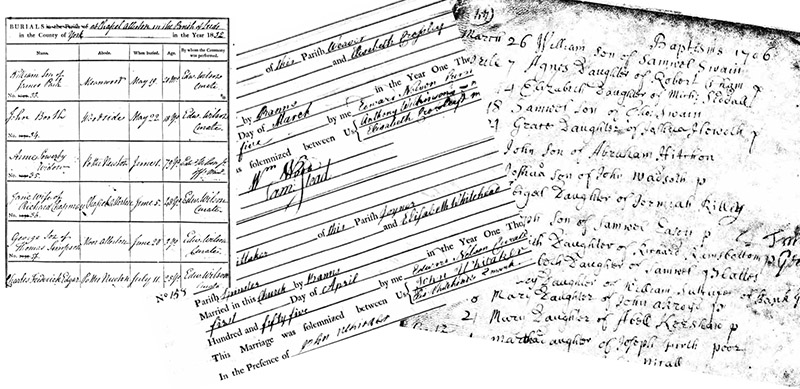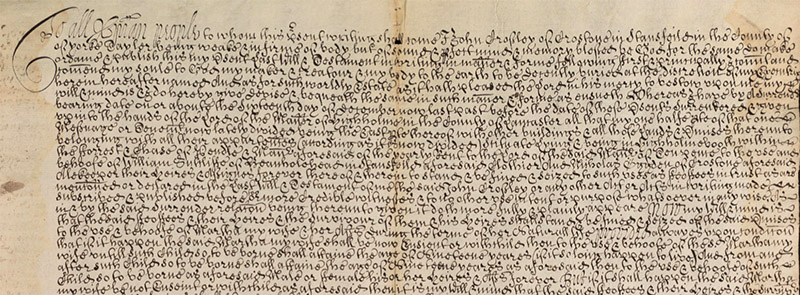Ideally, to trace someone's family history, the best starting point is to identify an ancestor in the 1911 or 1921 UK censuses, or the 1939 England and Wales register, these being the most recent population surveys currently accessible to the public. From there is it usually relatively straightforward, in conjunction with birth/marriage/death (BMD) and baptism/burial records, to trace back to people listed in the earliest census with genealogical information, in 1841; nearly all the previous censuses (starting in 1801) contained only numbers of people. The process for tracing forwards, from the early 1800s to the early 1900s, is similar.

If an ancestor in these later censuses is not identifiable, instead only someone more recent, then the BMD indices may have enough information to identify the family connections, but if not it may be necessary to purchase certificates, in particular a person's birth certificate, to identify the parents, and then the parent's marriage certificate, to identify their parents (or fathers). English/Welsh certificates are priced at £11 and take around a week to arrive, so this will lengthen the overall time and cost for a project, but once back to the early 1900s, researching the preceding few generations should be much quicker.
Tracing forwards, perhaps all the way to the present day, is more problematic, partly due to data-protection issues regarding records of living people, but still usually possible, again often requiring purchase of certificates.

Prior to the census, the main sources of family data are the parish registers, recording baptisms, marriages and burials. The amount of information varies, both for different parishes, or different periods for any one parish - baptisms, for example, may list only name of child and name of father, or alternatively, names of both parents, plus birth location and father's occupation. Earlier records tend to have less information than later records. There is a wide variation in the earliest date for which parish records are available, only from the early 1800s in some parishes, especially in Scotland, for others right back to 1538 when the first edict was issued requiring parish registrations. For my own family, the earliest direct-line ancestors to appear in records were the Lancasters of Great Strickland in Cumberland, who are represented by several entries in the 1550s.

Of the other relevant records, wills are the most useful as they often contain precise details of many relatives. Only a few are online, however; most need to be ordered, from a variety of record offices, so again, this will add to the expense and time for a research project.
Other genealogical sources, primarily for pre-1800 research, include tax lists, tithe lists, poor law records, manor court records, military records, herald's visitations and quarter session records. These generally take longer to research, and (if not already transcribed) to decipher, but for more recent research, typical ancestor and descendant trees, as shown in the examples on the homepage, take from a few hours to one full day to construct, assuming no documents need to be ordered.

Samples from the 1911 census, the 1841 census, and the 1939 register
If an ancestor in these later censuses is not identifiable, instead only someone more recent, then the BMD indices may have enough information to identify the family connections, but if not it may be necessary to purchase certificates, in particular a person's birth certificate, to identify the parents, and then the parent's marriage certificate, to identify their parents (or fathers). English/Welsh certificates are priced at £11 and take around a week to arrive, so this will lengthen the overall time and cost for a project, but once back to the early 1900s, researching the preceding few generations should be much quicker.
Tracing forwards, perhaps all the way to the present day, is more problematic, partly due to data-protection issues regarding records of living people, but still usually possible, again often requiring purchase of certificates.

Samples from parish registers; burials, marriages and baptisms
Prior to the census, the main sources of family data are the parish registers, recording baptisms, marriages and burials. The amount of information varies, both for different parishes, or different periods for any one parish - baptisms, for example, may list only name of child and name of father, or alternatively, names of both parents, plus birth location and father's occupation. Earlier records tend to have less information than later records. There is a wide variation in the earliest date for which parish records are available, only from the early 1800s in some parishes, especially in Scotland, for others right back to 1538 when the first edict was issued requiring parish registrations. For my own family, the earliest direct-line ancestors to appear in records were the Lancasters of Great Strickland in Cumberland, who are represented by several entries in the 1550s.

Will of John Crosley of Crostone, proved 1704
Of the other relevant records, wills are the most useful as they often contain precise details of many relatives. Only a few are online, however; most need to be ordered, from a variety of record offices, so again, this will add to the expense and time for a research project.
Other genealogical sources, primarily for pre-1800 research, include tax lists, tithe lists, poor law records, manor court records, military records, herald's visitations and quarter session records. These generally take longer to research, and (if not already transcribed) to decipher, but for more recent research, typical ancestor and descendant trees, as shown in the examples on the homepage, take from a few hours to one full day to construct, assuming no documents need to be ordered.
For more information please contact Dr John Crossley at
or text/telephone 07923 293339